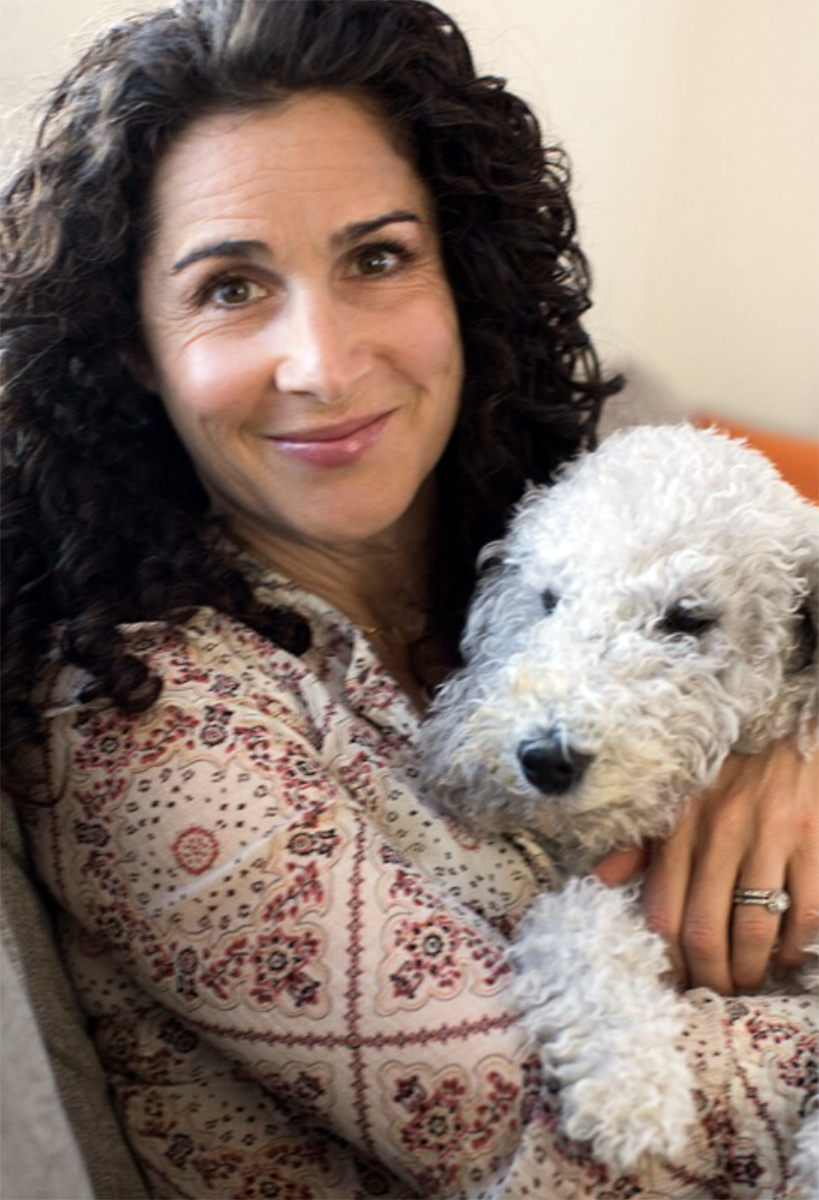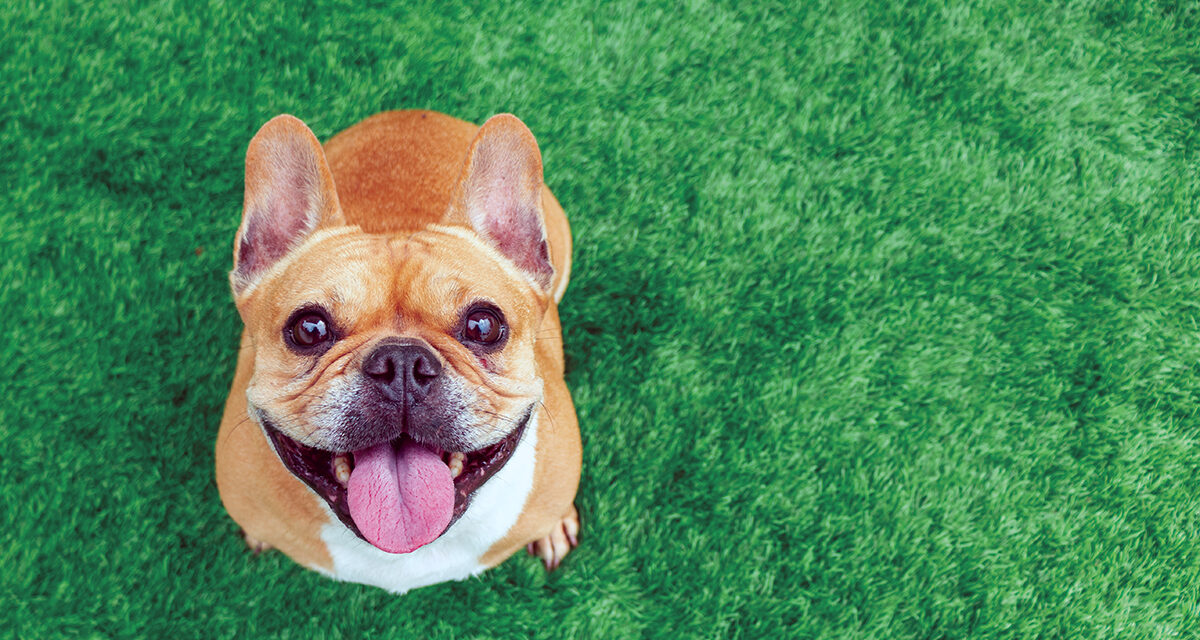Having a furry friend is good for the soul. They can help restore your faith that even in these crazy times, everything is going to be okay. It’s no wonder research shows pets can have a positive effect on the stressed-out, the emotionally spent, the elderly, and the ill. So, whether you’re reading this with your constant companion snoozing at your feet or you’re trying to figure out how to foster or adopt, here’s what you need to know about the healing power of pets.
7 Health Benefits of Having a Pet
There are a number of research-backed ways a furry friend can be good for your body, mind, and spirit. Here are a few of the biggies.
1. Nix stress. You know that instant calm you feel when you pet an animal? Turns out there’s a chemical explanation for that: Owning an animal decreases your levels of cortisol (the stress hormone) in your blood and boosts levels of dopamine (the feel-good brain chemical). Can’t snuggle up with a fluffy puppy? No problem: According to one study in the Journal of Nervous and Mental Disease, stroking a pet snake can lower your heart rate and blood pressure.
2. Boost immunity. Sure, feeling happier and less stress will inherently help your immune system do its job. But research also shows that people who pet dogs get an uptick in immunoglobulin A, an antibody that bolsters your body’s ability to fight
off illness.
3. Ease pain. Want your body to unleash a slew of natural pain relievers (a.k.a. endorphins)? All it takes is simply looking at a dog, according to researchers at the University of Pittsburgh School of Medicine, who found 34 percent of patients with fibromyalgia felt less pain after a 15-minute visit with a therapy dog compared to patients who sat in a waiting room. Another study found that people recovering from joint replacement surgery needed 28 percent less oral pain medication after daily visits from a therapy dog than those who didn’t spend time with a pup.
4. Help your heart. According to one Swedish study that looked at more than 3.4 million people over 12 years, owning a dog lowers the risk for cardiovascular disease and was associated with lower mortality overall. Other research has found that heart attack patients who have pets survive longer than those without animals at home.
5. Reduce allergies. Bringing baby home to a house with a pet? Good news: Children who are exposed to animals during their first 6 months of life have a reduced chance of developing asthma and allergies later on. What’s more, babies in homes with dogs are less likely to have eczema and pet allergies, as well as higher levels of some beneficial immune system chemicals, according to research in the Journal of Allergy and Clinical Immunology.
6. More energy. In these uncertain, high-anxiety times, it can be tempting to give in to your lazy side. (Distraction via Netflix, anyone?) However, most pets won’t let you stay lethargic for very long—and that walk around the block with your dog or playtime with your kitty or bunny can go a long way toward giving you a little more oomph. No animal at home? No problem: One study from Indiana University found that watching cat videos decreased negative emotions and increased positive feelings.
7. Improve mood. Scientists have proven that pet owners are less likely to suffer from depression and loneliness than those without pets. But it’s not just dogs, cats, bunnies, or other common pets that make a difference. In fact, one study found nursing home residents who cared for cockroaches (yep, you read that right!) were less depressed after eight weeks than those who didn’t care for those tiny critters. Other research has found that simply watching fish in an aquarium can help reduce muscle tension and lower pulse rate.

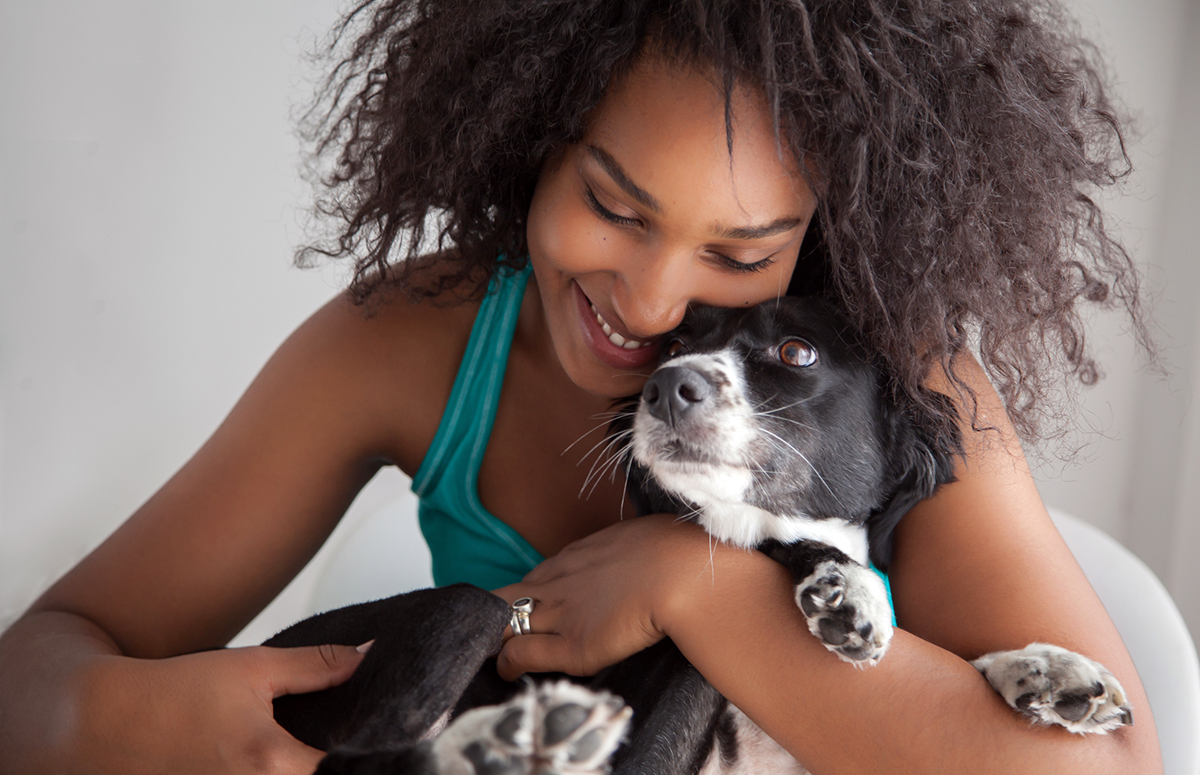
How to Train Your Dog
The Seeing Eye, which raises puppies to become seeing-eye dogs for blind people, offers their best expert tips.
There’s nothing as fun as having a new puppy. Training that new puppy? Not so much. But here’s the good news: You can teach a dog to become the most well-behaved on the block, says Peggy Gibbon, director of canine development for The Seeing Eye. The keys, she says: consistency and patience. So, whether you’ve got a new four-legged friend you’re trying to house-break or an old dog you’d like to teach a few new tricks, here are Gibbon’s top tips for nailing your next training session.
Tip No. 1: Whatever you do, be consistent. This basic tenant of dog training is fundamental for good reason, says Gibbon. “Think about it this way: Your pup is constantly learning from you as you go about your day,” she says. “For example, every time you grab your keys, it means you’re leaving the house. So, maybe your puppy runs to the door because he wants to go with you, and then you have this push-and-pull because the dog wants to go out but you need to leave for work.” If you break this pattern—say, by telling your dog to sit on his bed every time you have to leave without him—and stay consistent with that command, you’ll create a new behavior that works better for both of you. “Also, remember that everyone needs to be consistent with the expectations,” adds Gibbon. “Different expectations from different family members will be really confusing for your puppy.”
Tip No. 2: Stay patient—and know when it’s time to take a break. It can be easy to lose your temper when a puppy just isn’t getting it. But lose your temper and it’ll make things worse, says Gibbon. “Oftentimes when a puppy just isn’t following your instructions it’s because they don’t actually understand what it is they’re supposed to do,” she says. So, if your training session takes a turn for the terrible, take a break. “Sometimes the best move is to just stop until you and your puppy have a chance to regroup and come back at it from a place of patience,” says Gibbon.
Tip No. 3: Involve your kids. While the task of training a new puppy may seem too complicated for your kids to play a meaningful role in helping you with, Gibbon disagrees. “Of course, you should oversee the training, but I’ve seen young children doing obedience exercises with tiny puppies,” she says. “Plus, when you teach kids how to treat puppies, like how to pet them appropriately and be gentle with them, those lessons will carry throughout the child’s life.”
Tip No. 4: Establish some rules ahead of time. Will your pup be allowed on the couch? Where will she sleep at night—on her bed, or yours? Are there any rooms in the house that are off-limits? Who’ll walk the pup first thing in the morning, or feed her at night? These may seem like questions you can answer as your puppy settles in, but setting ground rules before you start training will go a long way toward helping you stay consistent, says Gibbon.
Tip No. 5: Teach a few key commands. Some of the most common also happens to be the most helpful. Gibbon recommends starting with the following:
Sit. This is the first command a puppy should learn, and it’s best to practice this at feeding time. Place your left hand on the puppy’s head and say his or her name, followed by “sit” as you gently push on the puppy’s chest with your right hand while running your left hand down the puppy’s back, tucking the puppy’s hindquarters into the sit position. As soon as the puppy sits, praise then place the food bowl on the floor. Your puppy will quickly learn that sitting is good behavior that is rewarded.
Stay. Ask your puppy to sit, then place your hand in front of the puppy’s nose (as if you are motioning the puppy to stop) and say “stay.” Take one small step away from your dog, then return and offer up lots of praise. Gradually increase the distance you move away from your puppy. To end the command, you can either return to the puppy and praise or ask the puppy to come and then praise.
Come. For dogs, learning to come when called is not only a behavior issue, it can also be a safety issue that protects your pup. To teach the command, call your puppy by name, using an enthusiastic voice and playful hand gestures, followed by the word “come.” Reinforce your puppy’s response to the command with plenty of praise.
Tip No. 6: Stop pulling, nipping, barking, and jumping in its tracks. If your pup won’t stop pulling during walks, break the dog’s momentum by stopping and asking her to sit. Do this every step if necessary, until your dog adjusts to the pace you want. When your puppy is walking appropriately, offer lots of praise. To correct nipping, gently pull or push the puppy away and verbally scold while making eye contact. Then, release your puppy and offer an appropriate toy as a substitute. If the puppy starts nipping again, repeat the correction and praise the puppy when he stops. To prevent jumping, put your hand on your pup’s chest and gently push him so his front feet go back onto the ground, saying “off” and giving him the sit command followed by praise. To discourage barking, quickly tug on your pup’s collar or give a verbal correction by saying “quiet.” Then, after correcting, give the puppy something to do, such as sit.
Tip No. 7: Know when it’s time to call a pro. Training a puppy is hard work, and depending on your dog’s temperament, it can be downright impossible to do it on your own. If you’re feeling more frustrated than successful, it might be time to look for a dog training organization in your area, says Gibbon. The American Kennel Club has multiple dog-training clubs in the area. “Generally, the people running these clubs have been raising and training dogs for decades, and they’re volunteering because they genuinely want to help other people with their dogs,” she says.
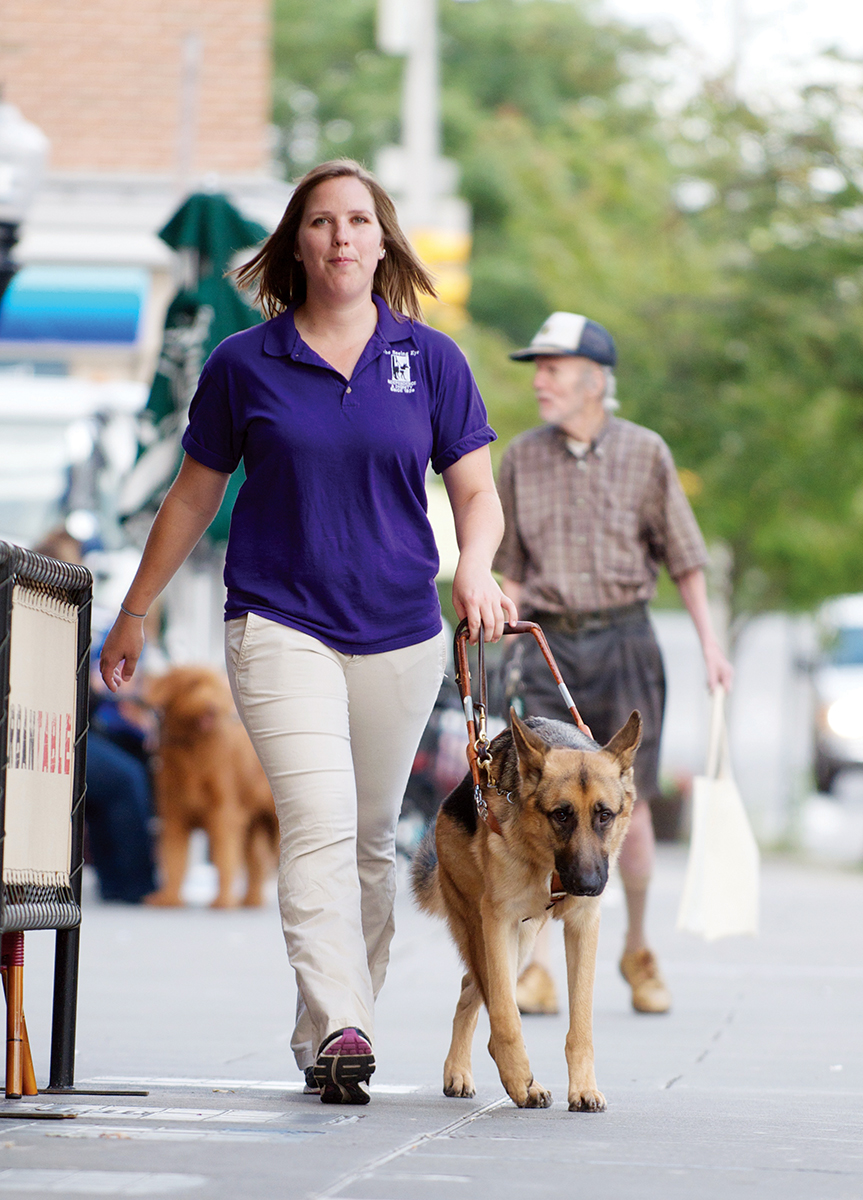
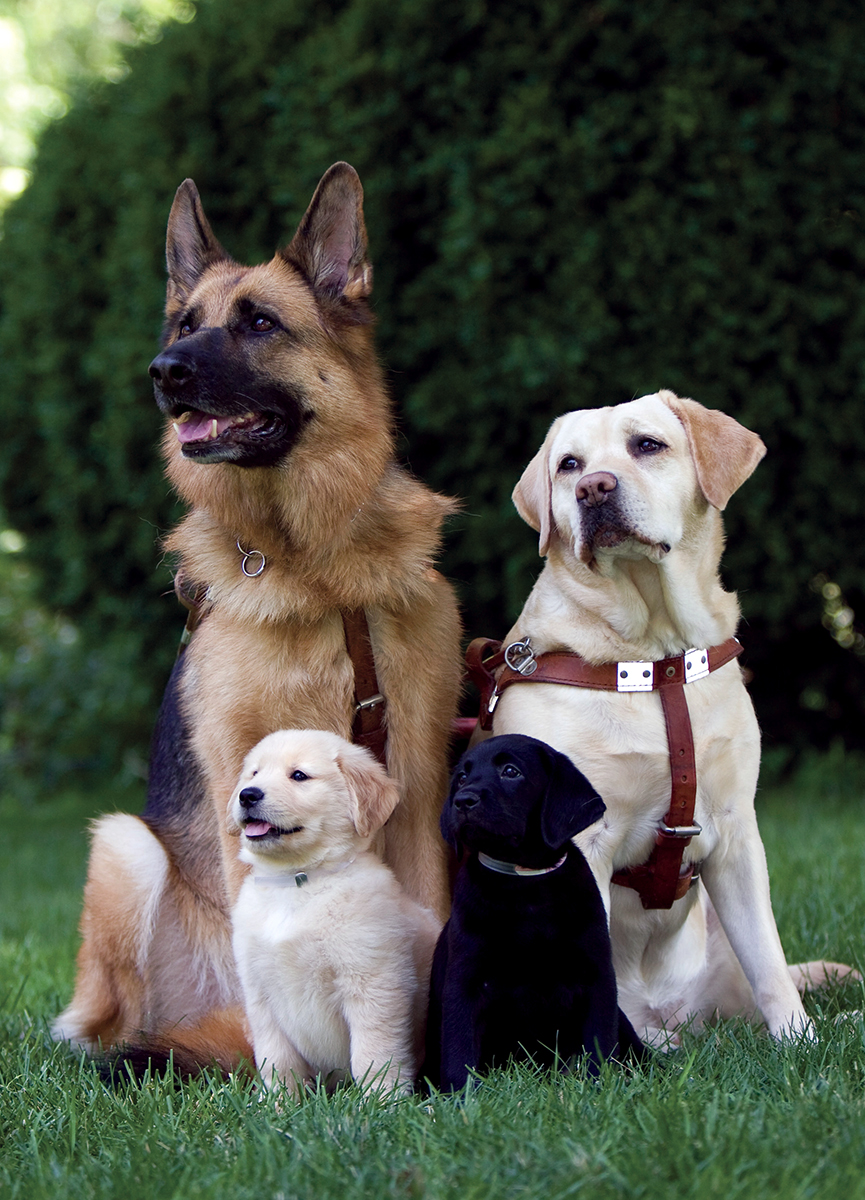
“Maizy was sent to take care of me.”
By Caroline Flyer
Five years ago, I said hello to my daughter Delaney and simultaneously said goodbye. Delaney was stillborn. Losing a baby is an unimaginable loss; you don’t really know how to feel, and it was too much for all of us—me, my husband Jason, and our 3-year-old son, Alex.
When I did allow my emotions to surface, it was late at night. I’d wake up and remember, and then go downstairs and burst into tears. We grieved and grieved.
We had been looking for a dog before I got pregnant with Delaney, and when we lost her, I knew it was time. I reached out to a friend who’s a breeder and he told me, “I know exactly what dog is yours.”He led me to Maizy, a 3-year-old Bedlington terrier who had this sweet sadness to her. She had some health issues, which is why we paid $500—not $5,000—for our would-be show dog. She was drawn to me, and her melancholy matched my own. She was a pillow for my broken heart.
Maizy came home with us that day, and it was clear she was just what we needed. When my son, Reed, was born, I’d get up to feed him in the middle of the night and close the nursery door so I wouldn’t wake up Jason or Alex. Every night without fail, I’d hear a little scratch on the door; it was always Maizy. I’d open the door, and she’d lay by Reed’s head.
A few months after we got Maizy, she started having problems with her eyes and nose—the result of an infection her mom had when she was in utero. When I mentioned this to my friend, the breeder, he explained that Maizy and her sister were the only surviving dogs of their litter. Their mother died of an infection, and the rest of the siblings were stillborn.”
It was as if Maizy knew what I had been through. Our sweet girl passed away when she was just 6. The infection ultimately made her kidneys fail.
But in that time, I gave her what she needed—her mama—just as she gave me what I needed, too.
